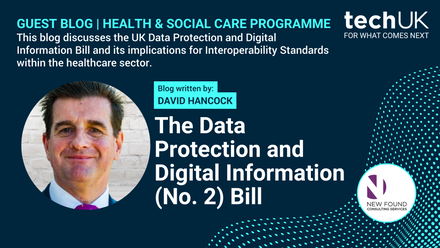Digital Inclusion: The bridge to an increased employment rate in the UK
As the UK strives toward an ambitious goal of achieving an 80% working age employment rate, one critical factor must not be overlooked: digital inclusion. In today’s increasingly online world, access to technology and the skills to use it effectively are no longer optional, they are essential for participating in the workforce.
At Reed in Partnership, we’ve been at the forefront of employment support since 1998, when we became the UK’s first private sector provider in this space. Over the years, we’ve helped more than 330,000 people move from unemployment into work. In 2025 alone, we’ve already identified IT-related barriers to employment over 5,500 times. These numbers highlight a persistent and urgent issue: digital exclusion is holding people back from accessing job opportunities and achieving economic independence.
Who is digitally excluded?
Digital exclusion doesn’t affect just one type of person; it spans multiple demographics. The Government’s Digital Inclusion Action Plan identifies five priority groups: lower-income households, older people, disabled people, people who are unemployed or seeking work, and young people. Reed in Partnership works directly with thousands of individuals from these groups, many of whom fall into more than one category.
But the challenge goes even further. We also support people for whom English is a second or foreign language, individuals in low-skilled work, and prison leavers, all of whom face unique barriers to digital access. Without targeted interventions, these groups risk being left behind not only in employment but in education, healthcare, and other aspects of public life.
Importantly, assumptions about who is digitally capable can be misleading. The Lloyds Bank Consumer Digital Index reveals that even those in the tech sector, high earners, academics, and 18–24-year-olds can lack essential digital skills. This underscores the need for inclusive, non-judgmental support that meets people where they are.
Why Digital Inclusion Matters for Employment?
Digital skills are now a prerequisite for most jobs. From submitting applications online to attending virtual interviews and using workplace software, being digitally literate is fundamental. For disabled people who are unemployed or economically inactive, digital exclusion is often compounded by other barriers such as poverty, literacy challenges, and health issues. That’s why digital support must be holistic and delivered by organisations that work closely with individuals to understand and address their specific needs.
At Reed in Partnership, we’re tackling digital exclusion head-on through our delivery of the Department for Work and Pensions’ Work and Health Programme and The Restart Scheme. Our approach includes:
- Dedicated digital inclusion courses for people with low or no digital familiarity.
- Referrals to community-based digital support hubs and courses.
- Specialised training to build IT skills for jobsearch and employment, including modules on effective jobsearch techniques, using LinkedIn, and understanding the role of social media in recruitment.
Feedback from participants has been overwhelmingly positive, 98% of those who completed our digital inclusion course agreed or strongly agreed that it helped them on their journey to employment.
What Makes Our Approach Effective?
Our success lies in the way we integrate digital inclusion into a broader, personalised support offer. We don’t treat digital skills as a standalone issue. Instead, we embed them into a framework that also addresses confidence, health, neurodivergence, money management, literacy, English language skills and other interconnected barriers to employment.
We also focus on goal-oriented learning. By aligning digital skills training with participants’ personal ambitions - whether that’s earning money, finding work in a specific sector or gaining independence - we help people see the value of engaging with technology.
Crucially, our support is ongoing and people-centred. In a recent survey, 81% of our Employment Advisers reported providing one-to-one coaching on digital access and skills on a weekly or even daily basis. This kind of personalised guidance is essential for building confidence and ensuring lasting change.
What next?
Digital inclusion is not just a social issue, if we are serious about reaching an 80% employment rate, we must ensure that everyone has the tools and support they need to participate in the digital economy. That means investing in targeted initiatives, partnering with organisations that understand the communities they serve, and recognising that digital exclusion is often one factor in someone’s journey towards employment.
At Reed in Partnership, we believe that with the right support, everyone can overcome digital barriers and unlock their potential. By prioritising digital inclusion, we can create a more equitable, resilient, and prosperous workforce and move closer to national employment goals.








